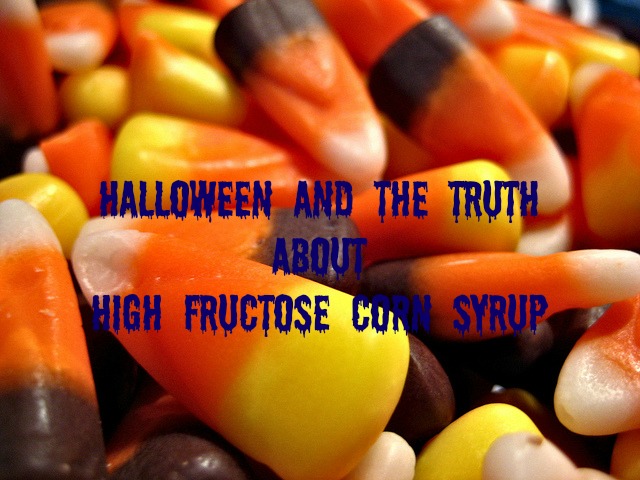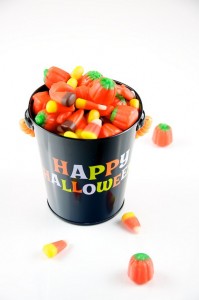Candy Corn, Kit Kats and M&M’s oh my!
Every Halloween it’s those bite sized candy bars that get me. Somehow on Halloween I give myself permission and I’m able to rationalize eating those fun- sized pieces (and lots of them). Bad news for me: the National Confectioners Association says that two 50-calorie bite-size candy bars may not seem like much, but 100 extra calories a day for a year can result in a 10-lb. weight gain. And come on-who can eat just two?
If that’s not enough to stop you from diving head first into the candy bowl, there’s more: chances are most of the candy you are consuming contains high fructose corn syrup (HFCS). There’s nothing wrong with a little indulgence on Halloween, but better to do so with the power of knowledge.
What is High Fructose Corn Syrup (HFCS)?
High fructose corn syrup (HFCS) is a man-made sweetener made from corn and can be found in foods and beverages on grocery store shelves in the United States. It can be found in a range of products from candy, soda and Twinkies to bread and ketchup. According to Planet Green :
There’s nothing natural about high fructose corn syrup and it most certainly does not exist in nature. The process starts off with corn kernels, yes, but then that corn is spun at a high velocity and combined with three enzymes…, so that it forms a thick syrup that’s way sweeter than sugar and super cheap to produce. That’s why it’s poured into a huge majority of mass produced processed foods.
Why is HFCS bad?
- It messes with your body and interferes with your metabolism so that a person can’t stop eating. It’s addictive and many think it’s one of the culprits behind childhood obesity.
- According to Healthy Child Healthy World, a few years back a study found mercury contamination in HFCS. Not good.
- HFCS is highly processed and has been linked to all sorts of health issues including obesity, cavities and a host of other health concerns and diseases.
- There is no nutrition whatsoever in HFCS.
- The use of HFCS isn’t very green and the environmental impact is huge.
- With more and more shoppers and manufacturers shying away from using HFCS the industry has gone to the FDA and requested a name change from HFCS to “corn sugar”. Even the corn industry knows that HFCS has a bad rap and there needs to be a change. You can click HERE to help prevent the name change, which would be very confusing to consumers.
How to avoid HFCS on Halloween
A few fun-sized candy bars make my kids smile on Halloween. I’m OK with that, but I’m all for getting rid of the leftover HFCS filled bonbons. Here are some ideas to help ditch the candy:
- Trade them. We have food allergies in our family so this is a simple fix for us. I usually buy healthy alternatives and trade with my kids. They take the good stuff and I collect the bad.
- Pay them. Yep, pay your kids for their candy. This works like a charm.
- Teach them. Read the labels on the candy together and teach your children why the candy isn’t good for them. We play a game -we look for the candy that has the most sugar, then the candy with the least sugar etc… Sounds like fun, doesn’t it?
- Donate them (the candy, not the kids). Do whatever you can to convince your children that the candy should be donated. Let me know how that goes.
Do you try to avoid high fructose corn syrup?
photo credit: Pahz via photopin cc
This post is part of the Green Halloween Blog Carnival. Check out the other posts for some great tips on how to green your Halloween!


